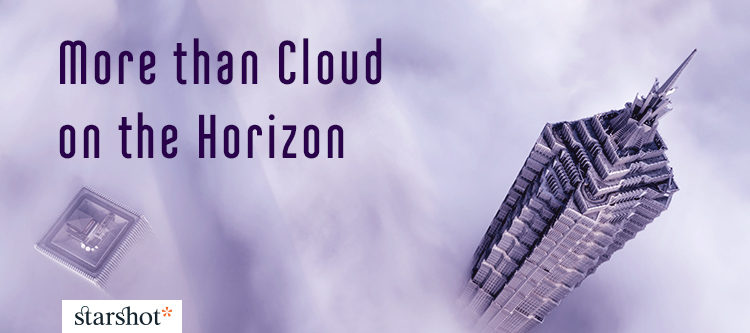A little foggy on how to sell what’s next?
It’s taken a while to build trust but clients have come to accept the benefits of cloud computing. Likewise, most clients can see the future in the Internet of Things.
Getting clients to trust innovation can be tough. Just when you think you’ve got it all sussed out, along comes fog computing, a move from processing in the cloud, back into local devices. Some people call it edge computing. Either way, you want to know how this will change your marketing.
On the road to IoT
Where the move to cloud computing was an effort to centralize as much data as possible off-site for easy upgrade and maintenance, fog computing decentralizes to do more of the work in the devices on the peripheral. Just cloud contrarianism, right?
Of course not, I wouldn’t have asked that if the answer was yes.
Data proliferation is about to go through the roof. When you and I think of the data that’s generated right now, it’s mostly in terms of office workers creating data by hand. We both know that’s in the process of changing drastically and we’ll need to change how we think about handling data.
When we talk about the Internet of Things, are we really thinking about how much data is involved? For example, a smart refrigerator isn’t just going to order groceries for you; it will perform constant checks on temperature, ensure that the ice maker is functional and full, and constantly check to see if the light is on when the fridge door is closed (I know I would). That would be a lot of data clogging up your connection. All you want is for the fridge to send an alert if it’s not working and order romaine if it goes bad.
The information load seems light enough when you’re thinking of one home appliance. This isn’t about just a refrigerator though.
Do you see the self-driving car coming down the road? They could be sending twenty-five gigabytes of data to the cloud every hour. Don’t tell me how you feel about that yet. Wait until you’re stuck in traffic, look at all the cars around you, then consider that your safety might rely on how much data you can transfer to the cloud. One estimate is that an average car will generate four thousand gigabytes of data every day. You can see why it’s important to deal with as much of that onboard as possible.
consider that your safety might rely on how much data you can transfer to the cloud. One estimate is that an average car will generate four thousand gigabytes of data every day. You can see why it’s important to deal with as much of that onboard as possible.
What about in a factory setting? Do you need massive robotic equipment to calculate its next move in the cloud? As task complexity is further delegated to AI, the onboard system will make more of those decisions and the cloud-based system will occasionally check them.
Reign of the cloud
As with online shopping vs. brick and mortar, any assumption that one disruptor will entirely redefine the marketplace is specious. Recognizing that balance is likely to open up many new selling opportunities for savvy technologists.
Not much needs to change with the kind of cloud computing we talked about earlier. People inputting data by hand is not going to become a problem. It’s clients who are launching IoT solutions that will have to think a little differently. The cloud will enter into the equation at three specific phases.
- Dispersal: Installation of programs to the end device, updates to the program, this will all be cloud based.
- Critical checks: We don’t want your AI devices going all Westworld on everybody. A quick check to get updates every once in a while, to get information like mapping and do a systems-check should be fine.
- Interpretation: One of the great benefits of the cloud is the amount of data you can gain insights from. It will still be the most meaningful place for data to interact. Clients will use their cloud interface to select which information gets sent for interpretation without having minutiae clog up the system.
In the end, we’re looking at moving from the lighter hardware of the last couple of refresh cycles to something with more horsepower. This will also mean a lot of software development and a new level of sophistication in understanding the very specific needs that clients will have.
We’ve all invested a lot of time and technology into cloud computing, and some people are a little panicked at the sea-change of fog. For those on the selling side of tech, this is fantastic news. While current computational power is generally sufficient for what a human is doing, the complexity of emerging IoT items and the power to interface with them meaningfully, will once again push the limits of what we’re doing in both hard- and software. And early adopters have a chance to once again become the trusted experts.
Looking to early-adopt your own little patch of fog computing? Strategize with us.
